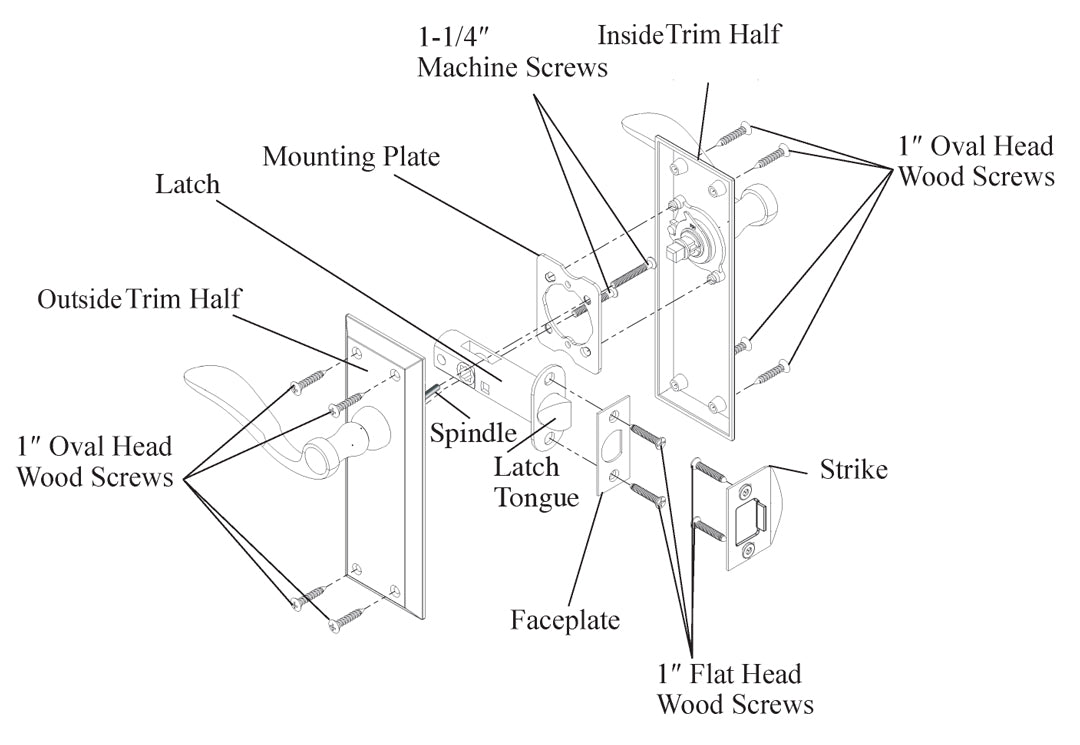Two of the main differences between mortise locks and tubular locks are size and function. Additionally, each lock assembly type is made of up different parts to distinctly set them apart. Mortise locks were typically used before 1950, and tubular locks after 1950. Read on for a quick explanation on the differences between these two types of door locks.
Mortise Latch
A mortise refers to the pocket cut into the door where the lock is fitted. Therefore, a mortise lockset cannot be installed on just any door. They are great for replacing the hardware on homes built before 1950. They can be used on new doors, but special preparations must be made.

An older mortise lockset and its mortise cut-out in the door.
Mortise assemblies typically include:
- Lock body (the part installed inside the mortise cut-out in the door)
- Lock trim, which is typically available in various knob, lever and handleset designs
- Strike plate–the metal plate affixed to the door jamb with a hole for the bolt of the lock to slide into, keeping the door closed
- A skeleton key to operate the locking and unlocking functions of the lock body
The illustration below shows how these parts work together:

Lock body placed into mortise cutout (left), lock trim being installed (center), and strike plate installed on door jamb (right)
Tubular Latch
Tubular locks are commonly found on all types of doors and are ideally suited for new (post-1950’s) pre-drilled doors. Tubular locks have a spindle assembly that extends into or through the center of the latch, allowing for retraction of the latch bolt when the lever or knob is rotated.

This diagram shows the components of a tubular latch assembly.

Latch with anti-rotation block inserted into the borehole of the door.